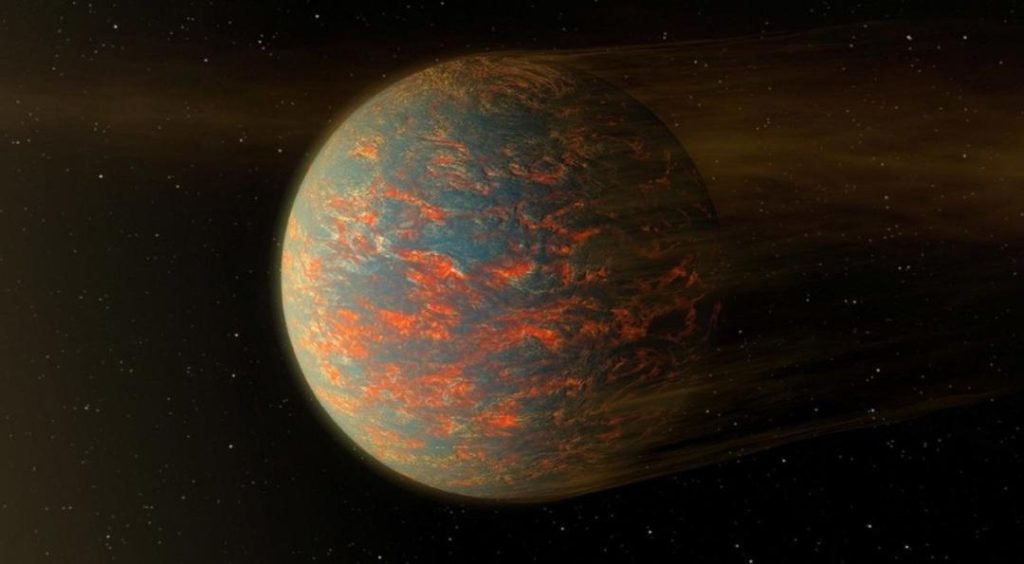
Newly-Discovered Super-Earth Heats Up & Freezes Every 300 Days
In a fascinating discovery, scientists have found a new “super-Earth” orbiting a Sun-like star just 20 light-years from our planet. What makes this planet extraordinary is its unique orbit, which takes it through extreme climates, swinging from scorching hot to freezing cold every 300 days. This remarkable phenomenon has left astronomers intrigued, sparking curiosity about the possibilities of life on this peculiar planet.
What is a Super-Earth?
Before we dive into the details of this newly-discovered super-Earth, let’s quickly define what makes it so special. A super-Earth is a planetary body that is larger than our own Earth but smaller than the gas giants like Neptune and Uranus. This classification is based on the planet’s mass and size, making it a crucial category for understanding the diversity of planetary systems in our universe.
The Discovery
The newly-discovered super-Earth, designated as K2-141b, is orbiting a star similar to our Sun, known as K2-141. Located about 20 light-years from Earth, this star is a relatively close neighbor in astronomical terms. The planet itself is about 1.5 times larger than our own Earth, making it a significant size for a terrestrial planet.
What’s remarkable about K2-141b is its unusual orbit, which takes it through an oval shape around its star. This eccentric orbit means that the planet’s distance from its star varies greatly throughout the year. When it’s at its closest point (called perihelion), the planet experiences extreme heat, with surface temperatures reaching as high as 2,400°F (1,300°C). This is hot enough to melt even the most resilient metals, let alone any potential life forms.
However, as K2-141b moves away from its star (aphelion), the temperature drops dramatically, plunging to as low as -400°F (-240°C). This is colder than the temperatures on Pluto, making it one of the coldest places in the solar system.
Implications for Life
The extreme climate fluctuations on K2-141b raise questions about the possibility of life on this planet. Could life forms adapt to such drastic temperature changes? Would they be able to survive in the scorching heat or freezing cold? These are just a few of the many questions that scientists are eager to answer.
One possibility is that life on K2-141b could be extremophilic, meaning it thrives in environments that would be hostile to most known life forms. Microorganisms on Earth, for example, can survive in extreme conditions like high temperatures, high salinity, or high acidity. Similarly, life on K2-141b might have evolved to cope with the extreme temperatures, perhaps by using specialized proteins or metabolic processes.
Future Research
The discovery of K2-141b has sparked a flurry of interest among scientists, who are eager to learn more about this fascinating planet. Upcoming research will focus on studying the planet’s atmosphere, composition, and potential biosignatures.
One area of research will involve analyzing the planet’s transmission spectrum, which will provide insights into its atmospheric composition and potential for life. This will involve monitoring the planet’s light absorption and emission patterns, which can reveal information about the presence of gases like oxygen, methane, or water vapor.
Another area of research will focus on understanding the planet’s geological activity and potential for plate tectonics. This could involve studying the planet’s surface features, such as mountains, craters, and fault lines, to determine if they are indicative of tectonic activity.
Conclusion
The discovery of K2-141b, a super-Earth that heats up and freezes every 300 days, is a remarkable find that has opened up new avenues for research and exploration. As scientists continue to study this fascinating planet, we may uncover new insights into the possibilities of life beyond Earth and the conditions that support life in the universe.
Source:






